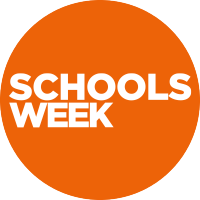
MsEmilyHunt
@msemilyhunt1
Associate Director @EduPolicyInst
ID: 1026885979662110720
07-08-2018 17:41:10
1,1K Tweet
701 Followers
863 Following

We support Education Policy Institute's call for a “student premium”. Pupils who experience poverty face unique challenges throughout their school journey, even after the age of 16. This support will help them stay in education, gain essential skills, and break down barriers to opportunity.



‘The sizeable attainment gap indicates that existing resources in 16-19 education are insufficient,' says Education Policy Institute report calling for a new post-16 ‘student premium’ tes.com/magazine/news/…

Essential read by Sarah Waite on the critical need to rethink our approach to educational inequality. The latest Education Policy Institute report reveals the dire consequences of neglecting post-16 education. We must support interventions across the entire system.

Disadvantaged students are 3.2 grades behind their peers by the time they finish 16-19 education. Our new report, supported by Unbound Philanthropy, calls for a 16-19 student premium to tackle the attainment gap facing disadvantaged 16–19-year-olds.👇 epi.org.uk/publications-a…

A huge thank you to Phoebe Arslanagić-Little for all of her work founding and running Women in Think Tanks, it's such a fantastic group - if you haven't already do join (!)

Disadvantaged students are 3.2 grades behind their peers by the time they finish 16-19 education. Our new report, supported by Unbound Philanthropy, calls for a student premium based on student-level and area-level measures of disadvantage.👇 epi.org.uk/publications-a…


Disadvantaged students are 3.2 grades behind their peers by the time they finish 16-19 education. Our new report, supported by Unbound Philanthropy, calls for a 16-19 student premium to tackle the attainment gap facing disadvantaged 16–19-year-olds.👇 epi.org.uk/publications-a…


"Addressing the #SEND crisis is an important part of bringing down absence rates, improving student outcomes and closing educational gaps. It must be a key priority for the new government." Our full response to Education Policy Institute analysis of absence rates: tinyurl.com/4huyh9bc


📈 The absence gap between the most vulnerable schoolchildren and their peers has widened further, increasing 'underlying inequalities' across the sector, Education Policy Institute has found Read more 🔽 buff.ly/46Fj8dv

📈 The absence gap between the most vulnerable schoolchildren and their peers has widened further, increasing 'underlying inequalities' across the sector Reacting to the findings, Pepe Di’Iasio said: 'The fact is that the SEND system is on its knees' buff.ly/46Fj8dv

School attendance is improving - but beneath this there is a worrying trend, new Education Policy Institute analysis reveals tes.com/magazine/news/…

Important new Education Policy Institute blog analysing latest absence data finds that although absence rates are generally coming down, this is NOT the case for pupils with EHCPs & those identified with social, emotional & mental health needs (with latter group growing by 37% post-pandemic)


Panel discussion at #OECDEAG report kicks off with Felicity Gillespie from Kindred Squared immediately citing Education Policy Institute findings that 40% of the gap at age 16 is already evident at age 5.


📢Commenting on the latest Key Stage 2 attainment data Louis Hodge , Associate Director, Education Policy Institute (EPI), said:


Yesterday's KS2 data release from Department for Education shows the attainment gap between disadvantaged pupils and their peers is still larger than it was before the pandemic. Concerning implications for social mobility.

